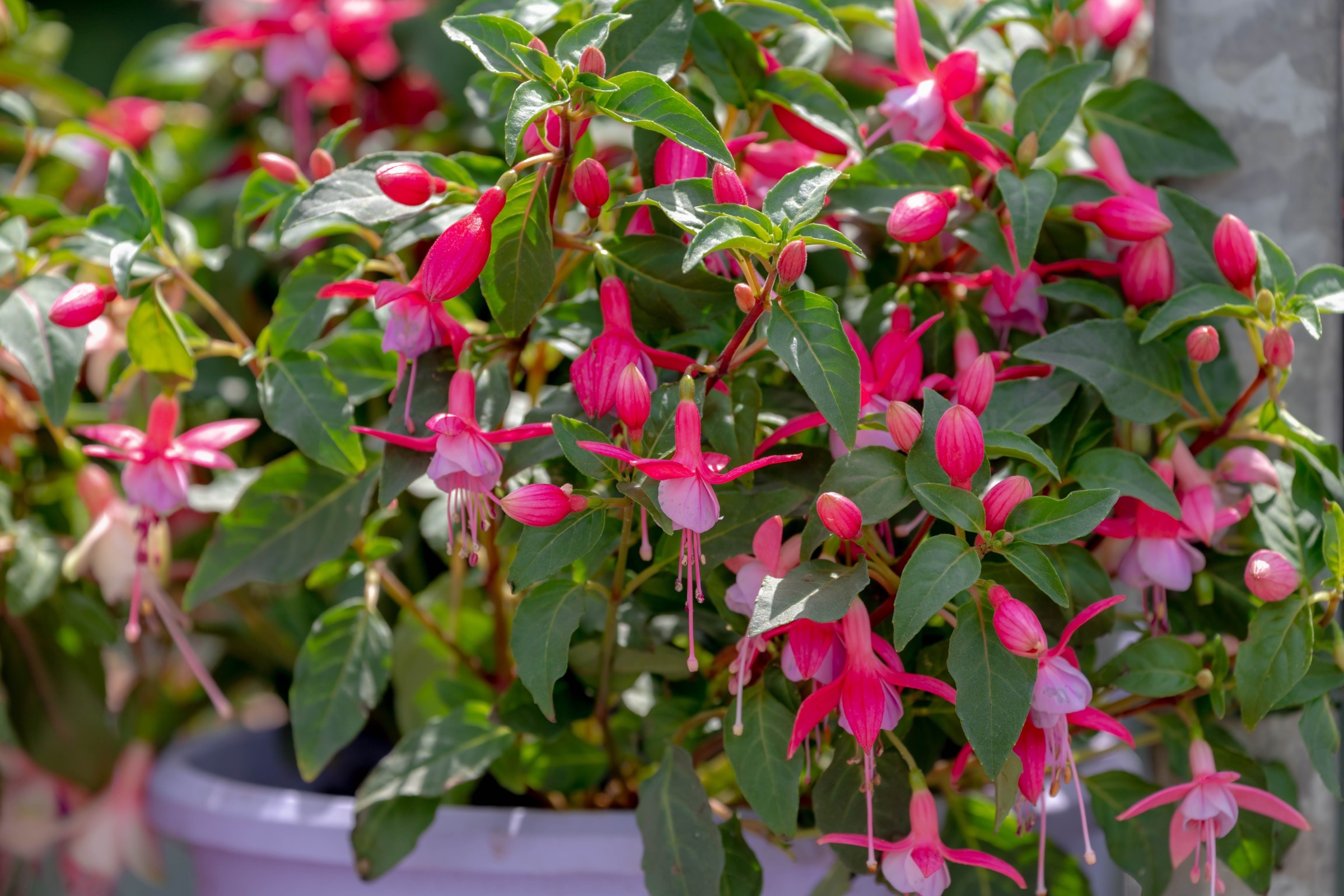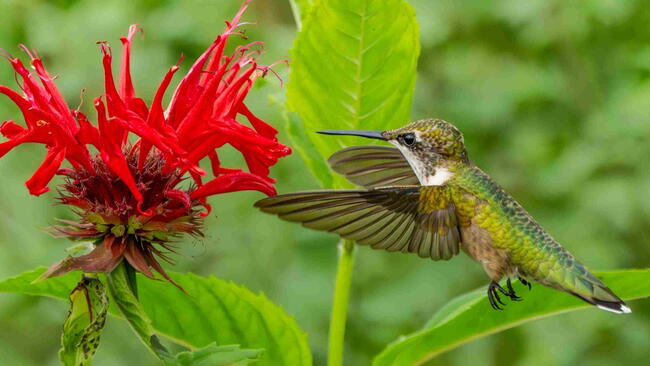
Planting, Growing, and Caring for Fuchsia Plants
Read Next
Types

- Hardy bush fuchsia (Fuchsia magellanica). A wide variety is available, some reaching as tall as 10 feet. Hardy to USDA Zones 6–9, these are some of the most cold-tolerant fuchsias. As the name implies, they have a bush habit and are loaded with pendant flowers.
- ‘Gartenmeister Bonstedt’ (F. triphylla) is a hardy fuchsia with an upright form, unusual darker bronzed foliage, and long, trumpet-shaped dark cherry blooms.
- ‘Rapunzel’ is a hanging basket star featuring violet and pale pink flowers and incredibly long, trailing stems.
- ‘Voodoo’ hybrid fuchsia is a trailing variety with gorgeous double flowers. Deep pink sepals with velvet violet petals in ruffles make this a hanging basket special.
- ‘Swingtime’ is a hybrid with a classical display of double white petals and bright apple-red sepals.
- ‘Aurea’ is the most commonly grown. Prostrate and upright with trailing habits, it grows 3 to 5 feet tall and/or wide in many color combinations.
- ‘Southgate’, a semi-trailing habit grows 4 to 8 inches tall and 18 to 24 inches wide. It has medium-sized, double, light pink, bicolor flowers.
- ‘Dark Eyes’ is an upright shrub form growing from 1 to 2 feet tall and 24 to 30 inches wide. It has medium-sized, double, red and violet-blue flowers.
- ‘Roesse Blacky’ is a shrub form with a lax and arching habit growing 1 foot tall and 1 to 2 feet wide. The medium-sized, semidouble flowers are red and dark purple to black.
- ‘Cardinal’ is an upright shrub growing 3 to 6 feet tall and 3 to 4 feet wide with magenta and red flowers.
- ‘Margaret’ is another shrub that grows up to 4 feet tall and wide. It is fast-growing and often used as a hedge. The flowers are semidouble and red and violet in color.
- ‘Prince of Orange’ is a bush hybrid growing 2 feet tall and wide with pale orange to red-orange flowers.
- ‘Remembrance’ is another shrub hybrid, 3 to 4 feet tall and wide, with pale pink and red flowers.
Gardening Products
More Like This
Hi Linda,
Sorry to hear about your fuchsia. They are such beautiful plants.
Typically you want to do your major pruning in the fall after the growing season or very early spring when new growth begins to emerge. Since fuchsias bloom on new growth and the bloom time arrives in early summer you want to be careful not to remove all the flower buds at this time. But with that being said, you can certainly pinch back the stems to a leaf node (or where the leaves previously were), which will promote new growth for a bushier appearance.
With any luck, the loss of leaves will only affect the appearance and not this year's blooms. If it does not bloom, you will certainly want to prune it in the fall so it will be in the best growing condition for next year.
Hope this helps.













Comments